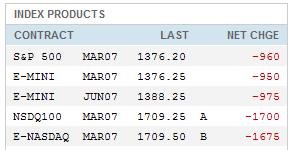After being a long-time user of Yodlee's Account Aggregation service, I have decided to give up trying to make it work with my finances. In the past, I have used MSN Money (which uses Yodlee) to track my finances online. But, I have several reasons why I'm about to abandon Yodlee:
1) Not all banks participate in Yodlee. This is annoying because it constantly leaves a hole in my financial picture. Most notably, I have significant holdings at Countrywide Bank, and at a credit union that are not participants in Yodlee's services.
2) Ongoing concerns about security and "Secure Sign On" problems make Yodlee potentially less secure than before. For reference, secure sign on is a multi-screen login feature that an increasing number of banks are now using. Typically you are shown a previously chosen picture and personal phrase during login. In addition to typing your password, the bank will then ask you to answer one or more confirmation questions for added security. These are personal questions that the user previously provided answers for.
In order to get Yodlee to work with these new security measures, you would have to store the answers to each one of these questions with Yodlee. Some examples of these questions are "What is your father's middle name?" and "What is the name of your first school?" If Yodlee's security was ever compromised, fixing the problem might not be as straightforward as changing your login name or password. An attacker could potentially build a database of information based on how you answered these questions for different banks, and more easily assume your identity.
3) Duplicate accounts are not handled well. At TD Ameritrade, my wife and I each have a login which allows us to access our individual accounts and the one joint account that we share. This account is double counted by Yodlee. To add to this confusion, the two "different" accounts may each show a different account value, depending on when the data for each login was updated. Yodlee has not provided a way to eliminate this double counting.
4) Extraneous accounts are an annoyance. I have a couple of accounts that I closed years ago, but are still associated with an existing bank login. These accounts shows up as extraneous zero balance accounts. I cannot delete a single account from Yodlee without deleting all of my accounts at the same bank. This extraneous information is definitely annoying.
5) In a previous post about account aggregation, I mentioned issues with Yodlee double counting the cash balances in my TD Ameritrade accounts. That post attracted the attention of Yodlee's senior VP Peter Hazlehurst who personally contacted me about these issues. Interestingly, immediately after I posted that article, I received a large number of visitors from a Yodlee domain located in India. I presume that Yodlee's customer service folks are based there. To make a long story short, some of my issues were indeed corrected. But as you can see by this post, several other problems are still not fully resolved. If Yodlee approached me again about helping them to resolve their issues, I think that I would decline the invitation. I don't intend to become a beta test site for Yodlee's software.
In one of the comments on my last post about Yodlee, Moneymonk said that "there is no perfect software [when] it comes to personal finance." She is correct there. I'm going back to the only way I know how to get a complete picture of our finances. I am again using an Excel spreadsheet to manually enter and track my financial balances.
DC
The New Roaring 20s?
17 hours ago












